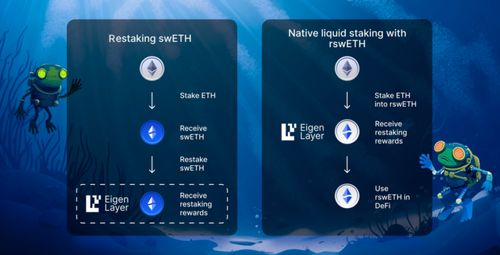The cryptocurrency landscape continually evolves, influenced by a multitude of factors. One of the most intriguing aspects in 2024 is the changing dynamics surrounding mining hosting fees in Russia. As mining increasingly becomes a global phenomenon, geographical variances in electricity costs, regulatory environments, and technological advancements come into play. The changes in Russian mining hosting fees can reshape the very fabric of cryptocurrency mining, affecting not just miners but also the broader market dynamics.

Mining, fundamentally, is the backbone of the cryptocurrency universe. It offers the essential verification of transactions that validate and secure blockchain networks like Bitcoin (BTC) and Ethereum (ETH). As miners race to solve complex algorithms, they require specialized equipment known as mining rigs or miners, which consume massive amounts of power. In Russia, the allure of low electricity costs has turned regions like Siberia into desirable mining hubs. However, these hosting fees are now poised for transformation.
One crucial factor altering the landscape is environmental regulations. In recent months, governmental bodies have begun tightening their grips on energy consumption and emissions. This shift aims to reconcile the booming cryptocurrency sector with climate change concerns. Notably, commitments to reduce carbon footprints and enforce stricter guidelines could lead to increased operational costs for mining hosting providers, subsequently affecting hosting fees.

Furthermore, the global supply chain disruptions significantly impacted the availability and costs of essential mining hardware. With Bitcoin and Dogecoin (DOG) popularity surging, demand outstripped production capabilities for mining rigs. Consequently, hosting services had to re-evaluate their pricing models to accommodate rising procurement costs for these machines as well as fluctuations in the cryptocurrency markets.
Also, let’s not forget the competitive landscape of mining hosting. As more players enter the market, the variety of options available increases. Providers are vying to attract clientele with various incentives, including price reductions and enhanced services. While this competition could drive hosting fees down temporarily, markets are inherently volatile. A sudden price hike in cryptocurrencies may lead to a brief resurgence in demand, pushing fees higher again. Predicting these oscillations is crucial for miners seeking to maximize profitability.
The introduction of mining pools is another trend that shapes hosting dynamics. Miners often collaborate to pool their resources, thus increasing their chances of successfully mining blocks and earning rewards. This collective approach dilutes individual hosting costs. In regions like Russia, this trend could push hosting providers to offer better rates or alternative packages aimed at miners participating in these pools, further impacting the fee structure.

On the flip side, as the cryptocurrency community matures, so does the scrutiny around exchanges and the trading environment. As exchanges take on greater regulatory responsibilities, their role in setting market trends—including the demand for hosting services—intensifies. This interdependence between mining and trading underscores the significance of favorable trading conditions; harsh market fluctuations can deter miners from investing in hosting services, destabilizing the sector further.
In light of this multifaceted landscape, staying ahead of trends becomes paramount. Those involved in mining, from individual miners to large hosting operations, need to keep a watchful eye on the constant shifts in costs, regulations, and public sentiment towards cryptocurrencies. Knowledge is power, especially in a space where a single change can ripple through global markets, impacting everything from transaction speeds to the value of currencies.
This period also highlights the need for educational resources to guide miners through the complexities of hosting and machine management. Advanced platforms that simplify mining operations and provide insights into optimal hosting setups can empower more individuals to engage in mining. Hence, as the market ebbs and flows, fostering a well-informed community can mitigate some of the uncertainties associated with these changes.

In conclusion, 2024 is set to be a pivotal year for mining hosting fees in Russia. The intersection of regulatory reforms, environmental considerations, and technological advancements presents both challenges and opportunities for miners and hosting providers alike. As we move forward, adaptability and a proactive approach towards emerging trends will be key in navigating these uncharted waters. Understanding the volatility of fees and the myriad factors influencing them can provide miners with a competitive edge, fostering resilience in an industry characterized by its unpredictability. This ever-evolving landscape beckons to those equipped with foresight, urging them to embrace the challenges while capitalizing on new avenues for success.

The article uncovers surprising shifts in Russian mining hosting fees driven by geopolitical tensions, energy market fluctuations, and innovative technology adoption. It offers a nuanced perspective on economic repercussions and emerging business models reshaping the sector in 2024.